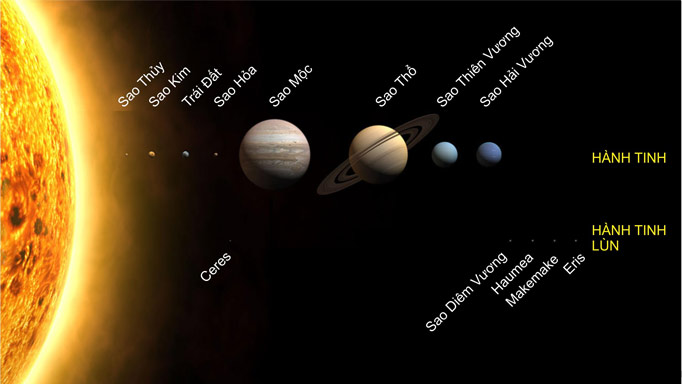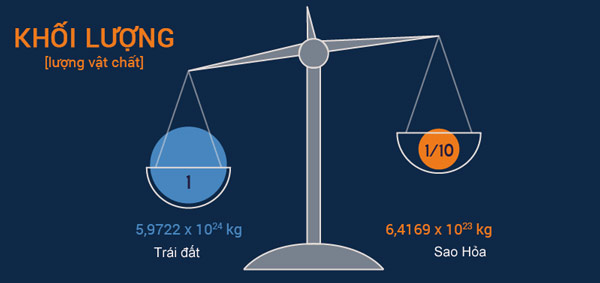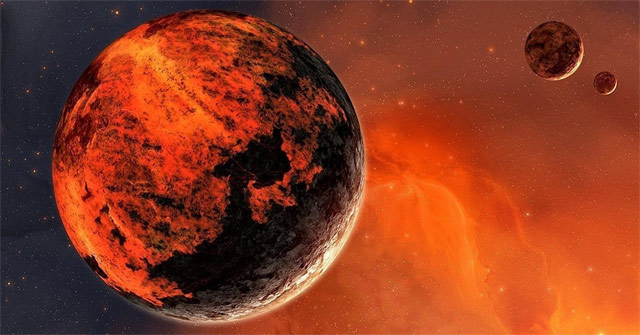Mars: Overview of the 4th planet in the solar system
How big is Mars? What is the mass of Mars? Let's find out with TipsMake what you need to know about the red planet!
Mars is the fourth planet from the sun and has a distinctive rusty red appearance and two unusual moons.
Mars, also known as the Red Planet, is a cold, desert world in our solar system. It has a very thin atmosphere, but this dusty, lifeless (as far as we know) planet is anything but dull.
Spectacular dust storms can grow so large that they engulf the entire planet, temperatures can drop so low that atmospheric carbon dioxide condenses directly into snow or ice, and Martian earthquakes regularly shake things up. So it's no surprise that this little red rock continues to intrigue scientists and is one of the most explored bodies in the solar system, according to NASA Science. Here's what you need to know about Mars.
Mars' position in the solar system
Mars coordinates: RA 21h 59m 15s | Inclination -14° 14′ 1″.
Mars is the fourth planet from the Sun in the Solar System. The average orbital distance of Mars from the Sun is about 230 million km (1.5 AU). The shortest distance between Mars and Earth is 57 million km.

Size and mass of Mars
At the equator, Mars is 4,222 miles (6,784 km) in diameter, and 4,196 miles (6,752 km) pole-to-pole. It is the second-smallest planet in the Solar System, larger only than Mercury. Mars is about half (53%) the size of Earth. The area of Mars is approximately equal to the total land area of Earth.
Mars weighs about 6.39E23 kg, which is 11% of the mass of Earth.

The volume of Mars is 163 billion km3, which is about 15% of the volume of Earth (1083 billion km3). It would take 6 Martians to fill our planet.
The density of the Red Planet is 3.93 g/cm³, less than that of Earth (5.51 g/cm³).
Orbit and rotation period of Mars
The orbital period of Mars is 687 days. A day on the Red Planet lasts 24 hours, 39 minutes, and 35.244 seconds (a day on Earth is 24 hours). A year on Mars is 1.8809 Earth years or 1 year, 320 days, and 18.2 hours.
Mars's axial tilt is 25.19 degrees, which is larger than Earth's 23.4 degrees.
Mars' orbit is very elliptical, so its distance from the Sun is constantly changing. Earth's orbit is nearly circular, so the distance between the Earth and the Sun remains almost constant throughout the year.
Water and atmosphere on Mars
Compared to Earth, Mars' atmosphere is quite thin, containing 95% carbon dioxide, 3% nitrogen, 1.6% argon, and traces of oxygen and water vapor.
The atmospheric pressure on Mars is only 1/100 that on Earth.
Water on Mars exists in solid form in the soil, and as ice sheets at the poles.
The average temperature on the Red Planet is around -60 degrees Celsius. However, temperatures near the poles in winter can drop to -125 degrees Celsius and temperatures at the equator during the day can rise to 20 degrees Celsius.

Composition of Mars
Dust crust: The surface of Mars is covered by a layer of fine dust. Beneath the dust is a Martian crust about 50km thick, mainly made up of volcanic basalt.
Mantle: The mantle is about 5,400 to 7,200 km deep, and is composed mainly of silicon, oxygen, iron, and magnesium.
Solid core: Located at the center of Mars, it is made up of iron, nickel, and sulfur. It is about 3,000 to 4,000 km in diameter. Mars does not have a magnetic field because the core is not moving.
You should read it
- Looking back at NASA's Mars exploration process over the past 20 years
- The answer to the disappearance of water on Mars already exists
- The strangest objects ever taken on Mars surprised many
- There are major changes in the atmosphere of Mars
- Why are microorganisms living 'so tough' on Earth but still hard to survive on Mars
- Stunned to discover river fossils on Mars
 OpenAI Challenges Google Chrome With Its New Browser
OpenAI Challenges Google Chrome With Its New Browser How to hide last seen status Telegram
How to hide last seen status Telegram Video: Close-up of the terrifying power of the 'super rocket' that fired 100 arrows at once in the 15th century
Video: Close-up of the terrifying power of the 'super rocket' that fired 100 arrows at once in the 15th century Why You Probably Don't Need a Third-Party Firewall App on Windows
Why You Probably Don't Need a Third-Party Firewall App on Windows Canonical Urges Ubuntu 20.04 LTS Users to Upgrade or Purchase Extended Support
Canonical Urges Ubuntu 20.04 LTS Users to Upgrade or Purchase Extended Support How to create polls in YouTube Shorts videos
How to create polls in YouTube Shorts videos